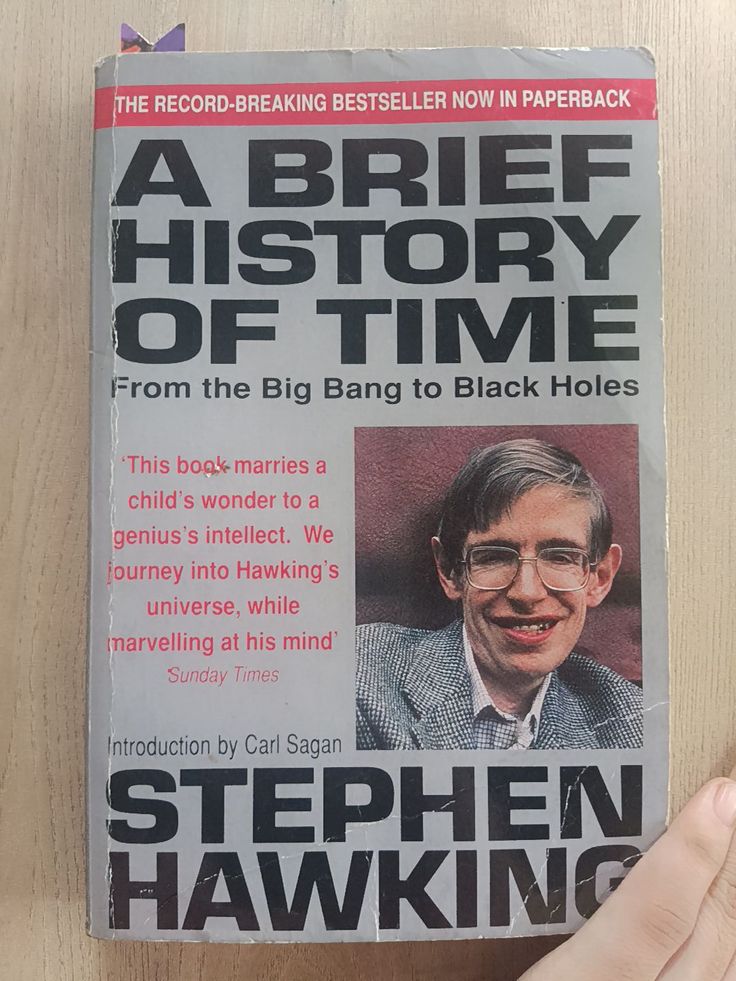Stephen Hawking's A Brief History of Time explores profound questions about the universe—its origins, structure, and fate. In this groundbreaking work, Hawking provides a deep dive into the mysteries of time, space, black holes, and the quest to understand the universe in its entirety.
1. The Universe Began with the Big Bang: Hawking discusses how the universe started with a singularity and expanded rapidly in an event known as the Big Bang. This theory explains the universe's origins and its continuous expansion over billions of years.
2. Time is Not Absolute: One of the key insights from Einstein’s theory of relativity is that time is not a constant, unchanging flow. Instead, time can be stretched or compressed depending on the speed and gravity of the observer. Time behaves differently near massive objects like black holes.
3. Black Holes are Not Completely Black: Contrary to previous beliefs, Hawking revealed that black holes emit radiation, now known as "Hawking radiation." This discovery showed that black holes slowly lose mass and could eventually evaporate, challenging the idea that nothing escapes from them.
4. The Universe is Governed by Physical Laws: Hawking emphasizes that the universe operates under a set of precise physical laws. These laws, such as gravity and quantum mechanics, are the building blocks of everything from the smallest particles to the largest galaxies.
5. The Arrow of Time: Hawking explains the concept of the "arrow of time," which moves in one direction—from past to future. This is a reflection of entropy, where disorder increases over time, giving the universe a sense of irreversible forward momentum.
6. Quantum Mechanics Explains the Subatomic World: The principles of quantum mechanics govern the behavior of particles at the smallest scales. In this realm, particles can exist in multiple states simultaneously, and their exact position and velocity cannot be determined with certainty.
7. The Theory of Everything is the Ultimate Goal: A central quest in modern physics, as presented by Hawking, is the search for a unified theory that combines quantum mechanics and general relativity. This "Theory of Everything" would explain all the forces of nature in a single framework.
8. The Role of Curved Space-Time: In Einstein's general theory of relativity, gravity is explained as the curvature of space-time caused by the presence of mass. Objects move along the curved paths of this space-time, explaining phenomena like planetary orbits and the bending of light around stars.
9. The Possibility of Multiple Universes: Hawking introduces the idea that our universe may not be the only one. The concept of the multiverse suggests that there could be countless other universes, each with different physical laws and constants, expanding our understanding of existence.
10. Science Can Help Us Understand the Meaning of the Universe: While many of the mysteries of the universe remain unsolved, Hawking believed that science offers the best hope for uncovering the answers. He encouraged curiosity and the pursuit of knowledge to explore the cosmos and our place within it.
Conclusion: A Brief History of Time provides a compelling and accessible journey through the most profound concepts in cosmology. Stephen Hawking's vision encourages readers to ponder the universe's complexity and marvel at the advances in human understanding, all while appreciating the ongoing search for answers to the ultimate questions of existence.




